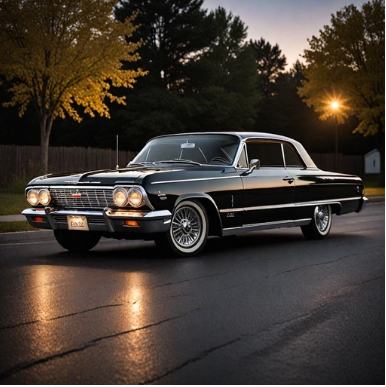The Evolution of the Pontiac Aztek: A Cultural Icon in Automotive History
Introduction
The Pontiac Aztek, a vehicle that brought a blend of innovation, design controversy, and cultural resonance, was produced from 2001 to 2005. Designed during a period when General Motors sought to redefine its image, the Aztek was intended to be a futuristic and adventurous crossover vehicle. However, it became notorious for its aesthetic appeal, or lack thereof, and has since evolved into a symbol of automotive design polarization. This article will explore the evolution of the Aztek, detailing its production years, models, trim levels, and the factors that contributed to its legacy.
1. Production Years
The Pontiac Aztek was manufactured from 2001 until 2005. During this span, it was marketed as a versatile vehicle that combined aspects of a sport utility vehicle (SUV) with those of a minivan. Its unique design choices and features reflected a significant shift in consumer preferences at the beginning of the 21st century.
2. Design and Development
The concept of the Aztek was born in the late 1990s when Pontiac aimed to attract younger consumers searching for a vehicle that represented adventure and individuality. The Aztek was designed by a small team led by Dave Hill, who sought to challenge conventional automotive styling. It featured unusual aesthetics, inspired partly by the impending rise of outdoor lifestyles and active living among young consumers.
Despite the ambitious vision, the final production model faced mixed reviews owing to its unconventional design and was often compared unfavorably to more traditional SUV designs. Nevertheless, some innovative features, such as the ability to convert the rear seats to a sleeping space and a built-in cooler, resonated with consumers.
3. Model Overview & Trim Levels
2001: The Aztek debuted in 2001, quickly captivating public attention with its quirky exterior and utility features. The base model was equipped with a 3.4-liter V6 engine producing 185 horsepower. The primary trims available were:
- Base: This entry-level model included essential features such as air conditioning, a CD player, and power windows and locks.
- GT: This trim upgraded features like alloy wheels, a rear spoiler, and a better sound system.
- Available Options: Buyers had the choice of a self-leveling suspension, a navigation system, and a cassette player.
2002: For its second year, the Aztek saw a few enhancements across its trims:
- Base: Retained many of the foundational attributes from 2001.
- GT: Introduced additional safety features and an updated sound system.
- New trim: AWD (All-Wheel Drive) was offered, allowing greater terrain versatility.
2003: The Aztek continued to establish its place within the Pontiac lineup:
- Base: Continued to offer affordability and utility.
- GT: Included further refinements in interior design and additional enhancements.
- Available Packages: New option packages allowed for increased customization.
2004: As the Aztek matured, it saw limited updates, reflecting its established place in the market. The main trims offered remained:
- Base: Priced competitively, catering to budget-conscious buyers seeking utility.
- GT: Maintained its sporty allure with upgraded electronic features and improved entertainment systems.
- Special Edition: Pontiac introduced a “Final 500” edition to commemorate the close of production. It included unique color options and trim accessories that highlighted the Aztek’s adventurous nature.
2005: The final year of production, the Aztek received minimal updates but continued to celebrate its design, albeit as part of Pontiac’s phase-out strategy:
- Base: Received the last round of minor tweaks for optimizations in seating and comfort.
- GT: Built upon previous success with enhancements focusing on family-friendly features.
- Limited Edition: Offered exclusive features like leather seating and upgraded technology.
4. Reception and Cultural Significance
Initial reception of the Pontiac Aztek was decidedly mixed. Critics often pointed to its unusual design, deeming it too polarizing to resonate with a wider audience. However, over time, the Aztek gained a cult following and became an emblem of early 2000s automotive missteps.
It has appeared in numerous television shows, most notably as the vehicle driven by Walter White in the acclaimed series “Breaking Bad,” further solidifying its place in pop culture. The Aztek’s portrayal in the series highlighted its role as a tool of transformation for the show’s conflicted protagonist.
5. Legacy
Despite its short production run and mixed reviews, the Pontiac Aztek’s legacy continues today. Its unconventional design and the space it offered expanded the narrative of what an SUV could be, paving the way for future market entries from various manufacturers leading to the crossover SUV boom. The Aztek also serves as a case study in automotive marketing and design, demonstrating the risks involved with trying to deviate too far from the norm.
Today, the Aztek is recognized not just for its quirky looks but as a significant entry point in the evolution of the automotive landscape, where utility and individual expression began to converge. It has maintained a presence in automotive enthusiast circles, where fans appreciate its originality and the boldness of its design philosophy.
.

.
Conclusion
In conclusion, the Pontiac Aztek, produced between 2001 and 2005, stands as a reminder of the complexities and challenges of automotive design and consumer acceptance. With various trims and models evolving throughout its production run, the Aztek sought to provide a unique vehicle experience that combined utility and adventure. Its controversial design led to mixed reviews but ultimately contributed to its status as a cultural icon. Whether viewed through the lens of automotive design, popular culture, or nostalgia, the Pontiac Aztek remains a definitive part of automotive history.







